Gary Wain tests the brand-new Precision Ballistics Mako hollow-point slug...
 credit: Gary Wain
credit: Gary Wain
Hollow-point pellets have been around for good few years now, and although they occupy an important niche, it’s fair to say that they haven’t exactly dominated the market. The reason for this is that although hollow points pack quite a terminal ballistic punch, on the whole, they’re not renowned for being the most accurate pellets in the world. Granted, there are a few notable exceptions in the form of the JSB Hades, and the H&N Hunter, but in my experience, most have been shockingly inaccurate, and offer no guarantee of a head shot at any distance over 10m, and some, not even that.
We’ve also seen quite a few slug-type pellets of late, but most of these are .22 and aimed quite firmly at the FAC sector of the sales spectrum, and whilst there have been a few available in .177, they tend to be very heavy, and again, still perhaps favouring the FAC airgunner.
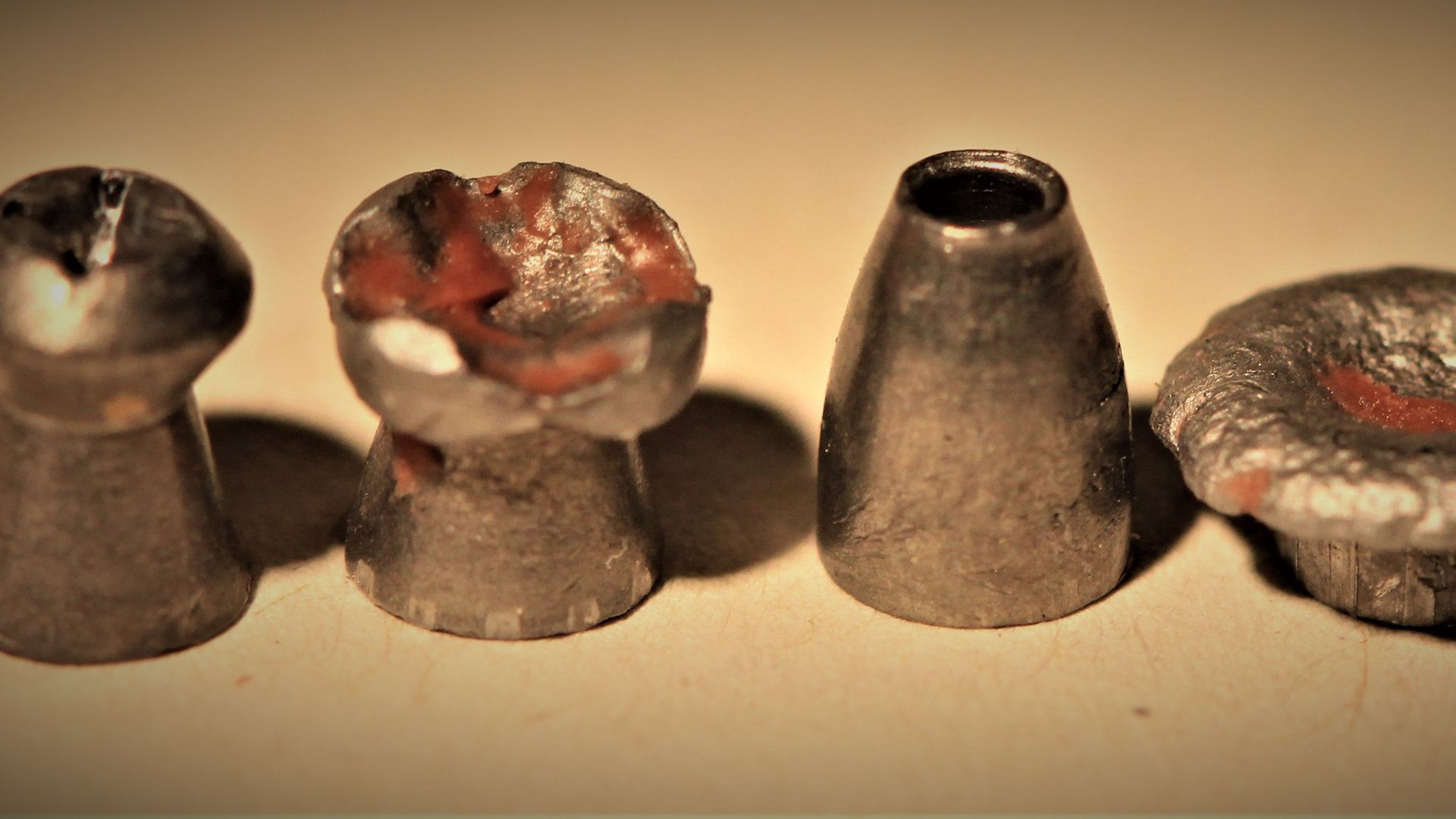 credit: Gary Wain
credit: Gary Wain
ENTER THE MAKO
With the above in mind, how bold a move would it be for a company to engineer a pellet that is both a hollow point and a slug? Not only that, but it comes as a .177, and has a given weight of just 10.5gr, putting it fractionally above the average 8gr weight for a .177 pellet. The company is Precision Ballistics, and the pellet is the Mako.
In previous articles I’ve talked about both coefficient of form, and sectional density, and how they combine to produce a ballistic coefficient. To recap; pointy things pass through the air easier than blunt things. Unfortunately, pointy things also pass more readily through objects than blunt things, which from a terminal ballistics standpoint is the total opposite of what we want to happen because the majority of the energy passes through the object, as opposed to being deposited within it.
Ammunition manufacturers discovered quite a while ago that introducing a hollow point into an otherwise pointy(ish) pellet minimises its ballistic coefficient losses through the air, and maintains, if not increases its terminal ballistic characteristics upon hitting the target. Regrettably, though, these changes have had a tendency to decrease accuracy massively over distance. The ‘Holy Grail’ then is a projectile that has a good ballistic coefficient through air and an impressive terminal ballistic effect, but one that also manages to maintain a consistent accuracy. Many have tried, but few, if any have succeeded. What I’m here to do, is see how the Mako measures up.
 credit: Gary Wain
credit: Gary Wain
WHAT MAKES THE MAKO SPECIAL?
Before we get to testing, I just want to talk a little about the physical characteristics of the Mako and the manufacturing process. As I’ve mentioned, it’s a slug-type pellet, but rather than being cast, each pellet is individually hand-swaged, so there are no seams or casting marks on the pellets, the result being a very consistent and high quality product. The Mako is 5.9mm long, with a given weight of 10.5gr, which from my measurements I found to be spot on, with very little deviation from a batch of 50.
The Mako also has a dished base; if the team at Precision Ballistics have got things right, this causes the thin rim of the dish to expand outwards, as the air pressure propels it down the barrel. This enables it to grip the lands of the rifling and thus induce the necessary rotation of the pellet, which is so vital to stability and accuracy. The final point of note is the deep but narrow hollow in the nose of the pellet, which is designed to cause deformation and expansion of the pellet on impact with the target.
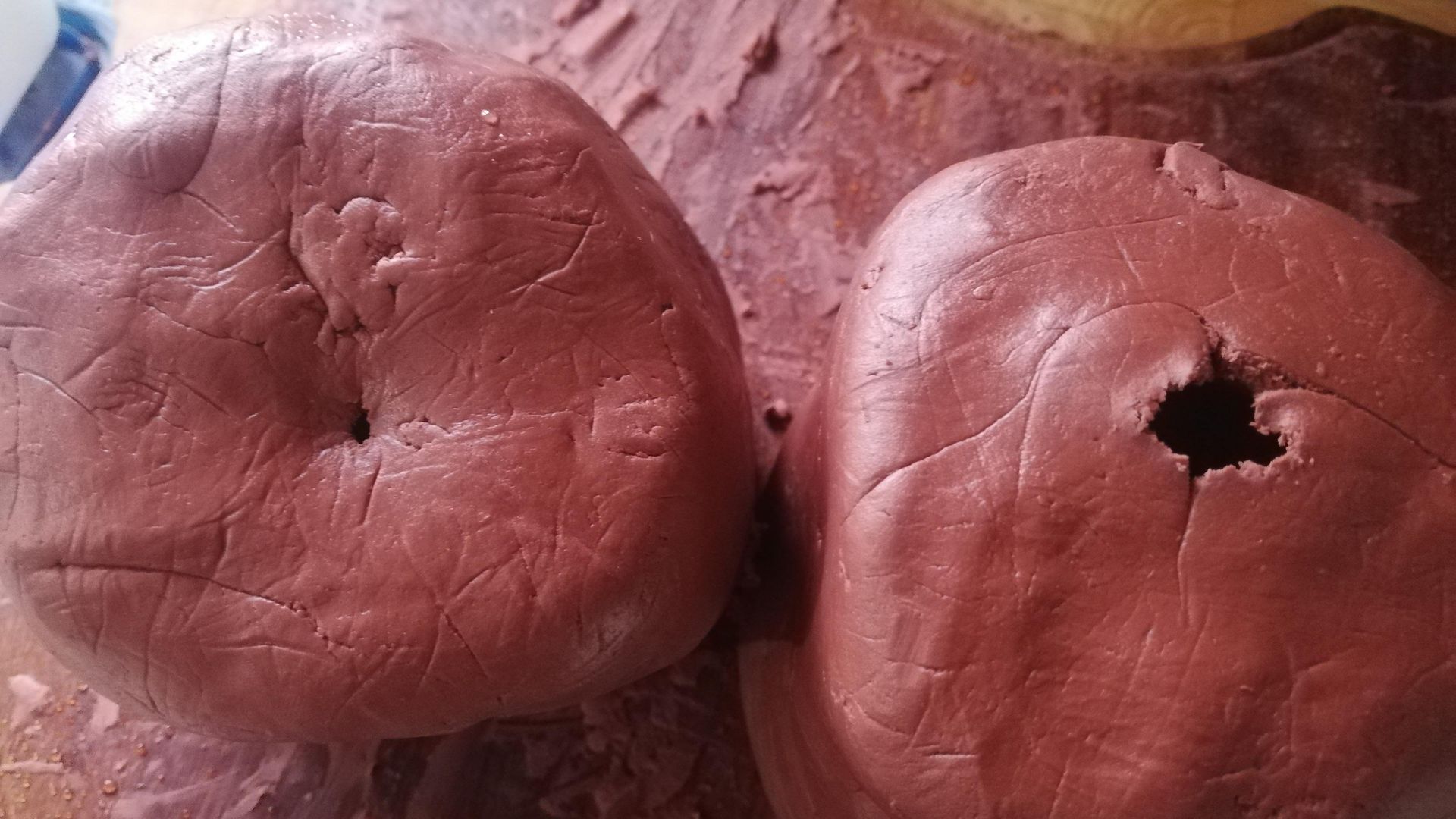 credit: Gary Wain
credit: Gary Wain
TESTING
It was my original intention to compare the Mako to other slug-type pellets on the market. Whilst delving into my stocks of pellet packs, though, it suddenly occurred to me that the Mako is not aimed at the same market as the heavy FAC-style slugs and so there would be little to be gained from that comparison.
Instead, I decided to match the Mako up against .177 pellets that were both hollow point and of about the same weight. As I looked back through my testing data, it became clear that the Mako should do battle with the 10.34gr JSB Hades, and the slightly lighter 9.26gr H&N Hunter Ext, and the hitherto untested and almost identically weighted 10.49 Remington Barracuda Hunter.
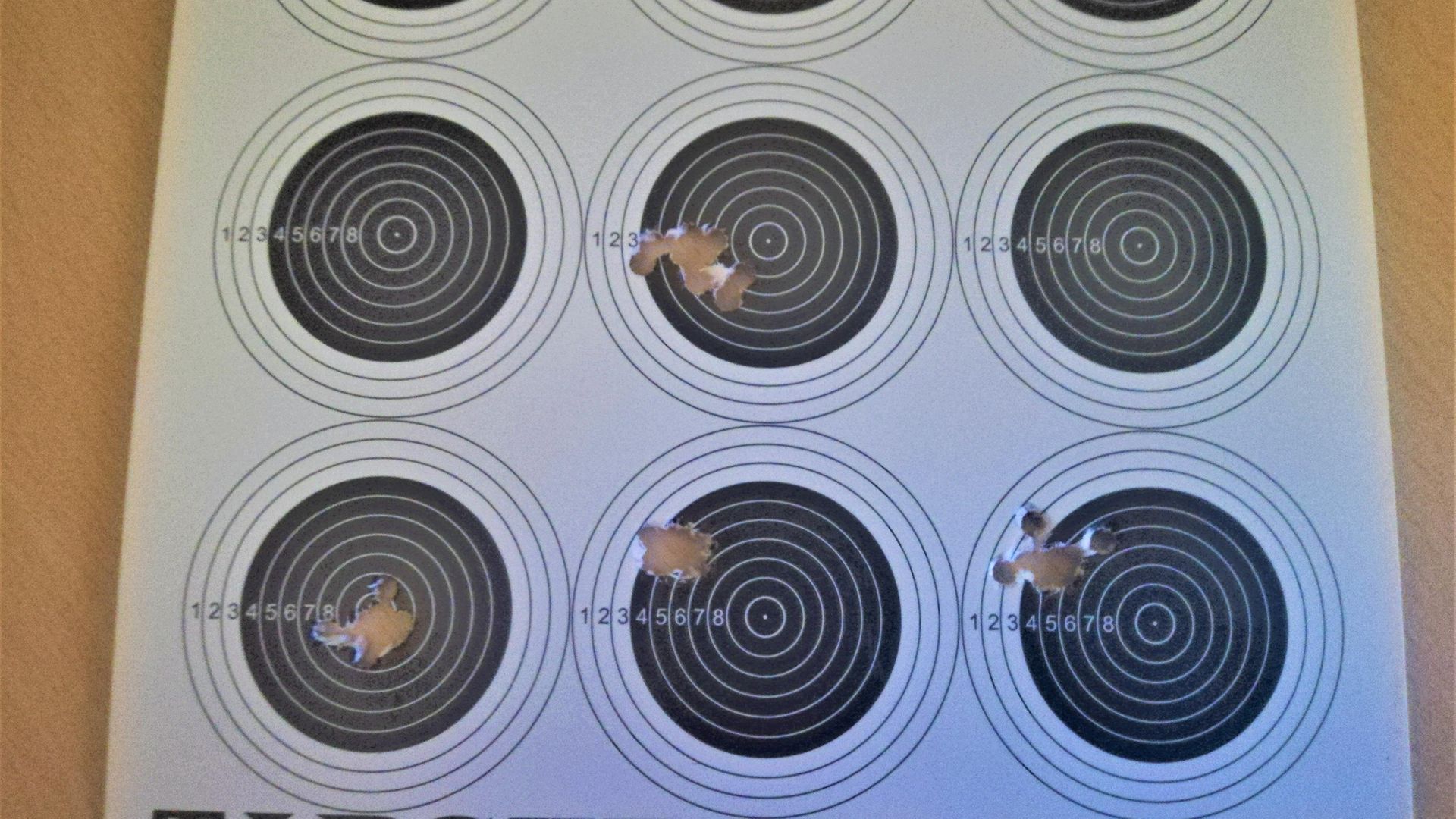 credit: Gary Wain
credit: Gary Wain
GROUPS
To test, I shot groups of 10 pellets at 25(ish) metres. I also shot a sample of each pellet through a pair of R2A chronographs which were placed on each side of a 40mm slab of warmed terracotta wax, used to simulate the effects on a pellet as it enters and exits the flesh of a potential quarry.
To finish, I then shot one of each of the two top performing pellets into a large block of terracotta wax, to obtain a core sample, and retained the pellet used to establish each of their terminal expansion properties. I should add that the conditions in which testing took place were atrocious, with high winds and rain of biblical proportions, so for all of you out there thinking that the Pulsar is a fair-weather gun, think again because neither it, nor the MTC Viper scope missed a beat during the testing process.
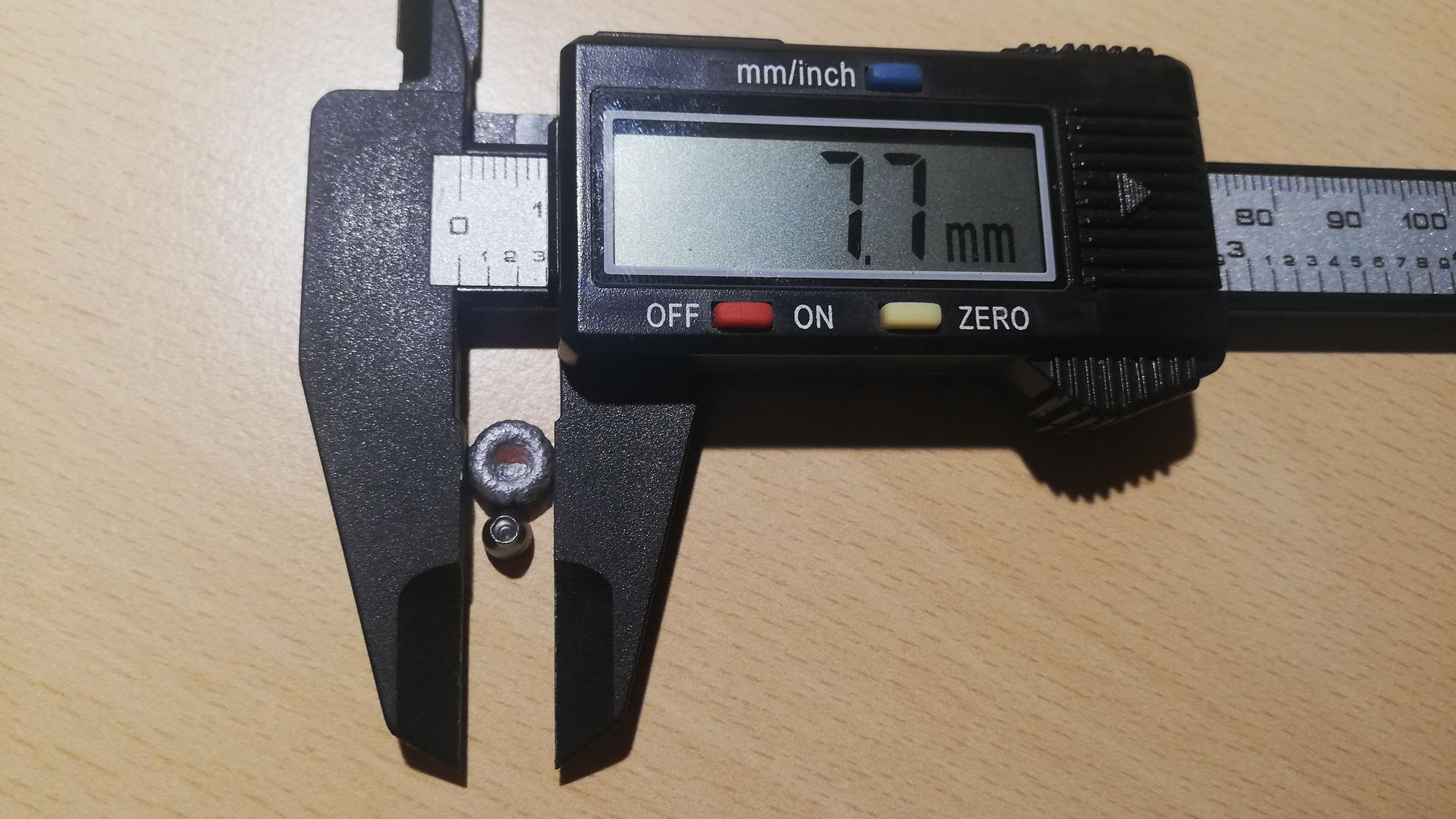 credit: Gary Wain
credit: Gary Wain
CONCLUSION
Those of you who are regular readers of my articles will know that each time I test pellets, I do so with an open mind. That said, I couldn’t help but think that the Mako would either be fantastic or a total flop. I’m also aware that others have reviewed these pellets, and I have deliberately avoided reading those reviews because I like to form my own conclusions, uninhibited by other opinions.
In my accuracy tests, the Mako came a very close second to the (until now) class-leading Hades, with only 1.6mm variance in group size. When it came to the ballistic results, though, the Mako simply blew the opposition away, with an energy deposition of 9.15 ft.lbs being degrees higher than its nearest rival, the Hunter, which managed 8.58 ft.lbs. In the final test, the Mako was matched against the next best rival, in this case the Hunter, and still managed to better it in pellet expansion and terminal ballistic cavitation.
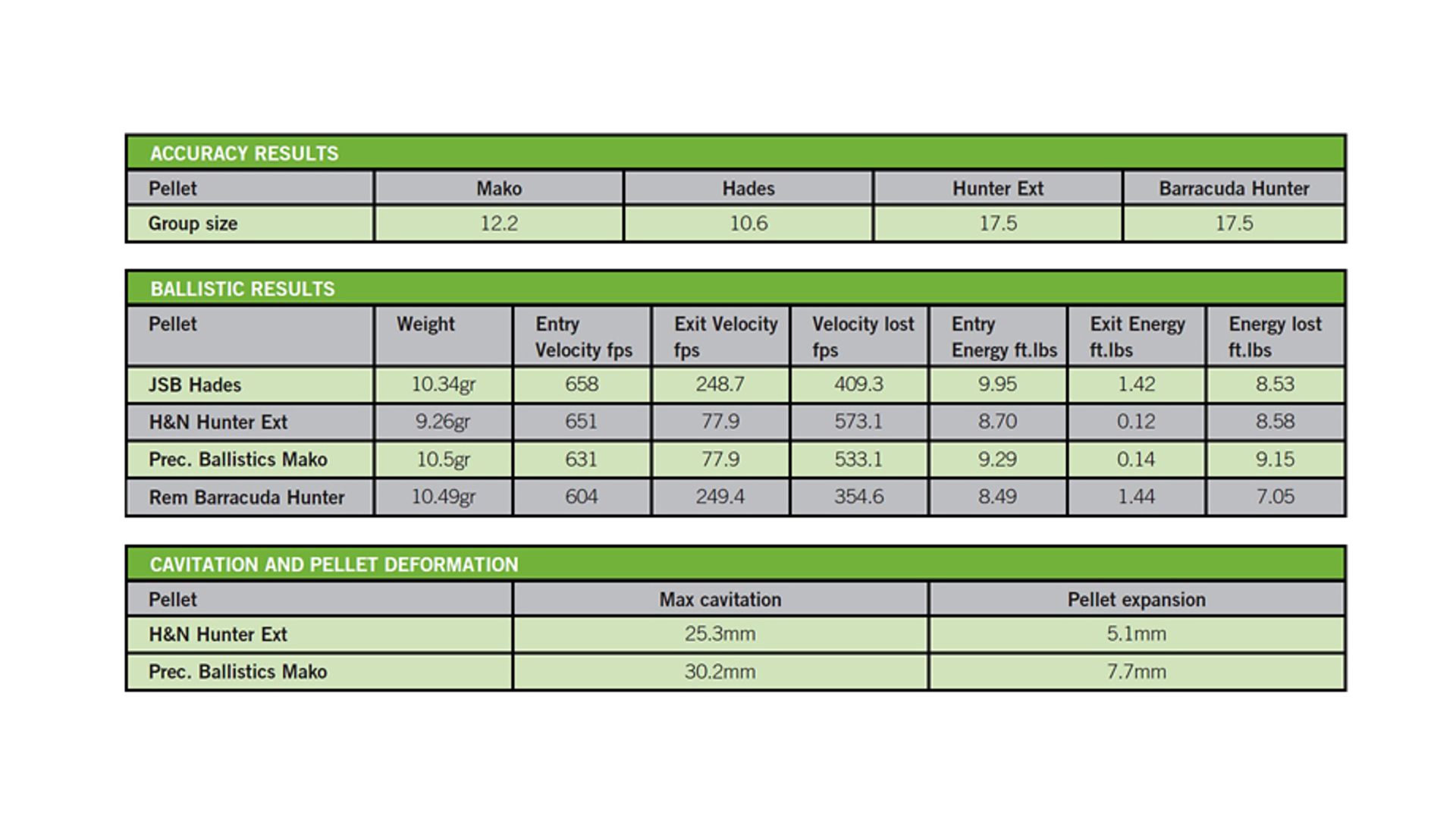 credit: Archant
credit: Archant
HOW MUCH?
The last thing to talk about is price; at £12 for 100, they’re certainly not the cheapest on the market, but the moment you get one in your hand, you’ll appreciate the quality of the product, never mind the care and attention that’s put into the packaging, ensuring that the pellets arrive undamaged. There are pellets available that do a similar job at a lower price point, but if you’re a hunter, or engaged in vermin control when a confirmed kill first time, every time, is a absolute must, and when you need to know that you have a high quality and trustworthy pellet at your disposal, then you’ll find it hard to find one to match the Mako.